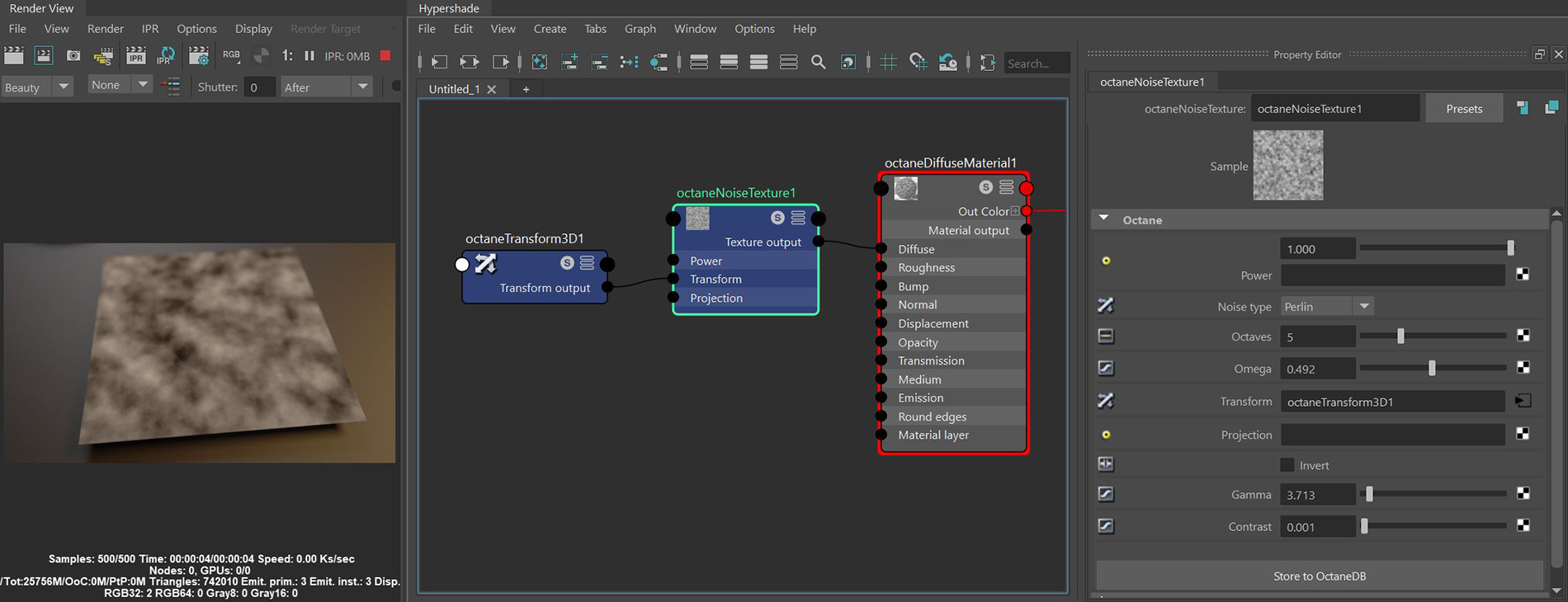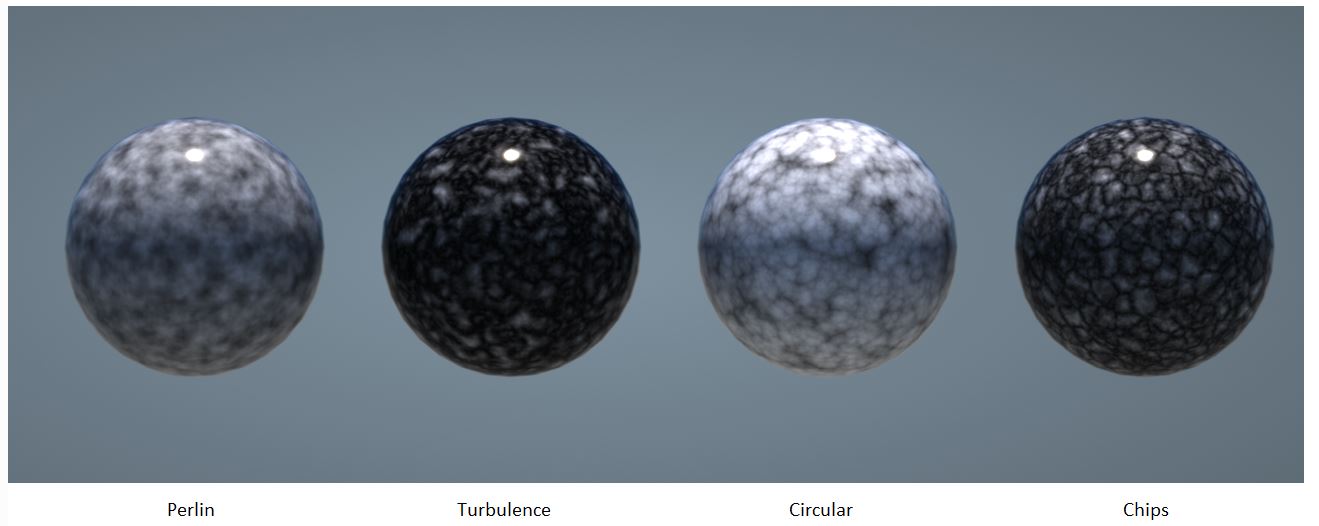
The Noise texture node is useful for creating and controlling the appearance of intentional noise (figure 1).

Figure 1: The Noise texture applied to a Diffuse materialUsed for dull, non-reflecting materials or mesh emitters. on a plane primitive
Power - Controls the texture's overall brightness.
Noise Type - There are four noise types:
Figure 2 compares the different noise types applied to spheres.

Octaves - Adjusts the scale of detail in the noise.
Omega - Adjusts the noise detail's sharpness.
Transform - Accepts an Octane Transform node, which changes the noise's position and scale.
Projection - Accepts an Octane Projection node, which determines how the noise maps to the surface. If left blank, the object's UV texture coordinates determine the mapping.
Invert - Reverses the noise colors.
GammaThe function or attribute used to code or decode luminance for common displays. The computer graphics industry has set a standard gamma setting of 2.2 making it the most common default for 3D modelling and rendering applications. - Adjusts the noise's luminance values.
Contrast - Adjusts the noise' overall contrast.